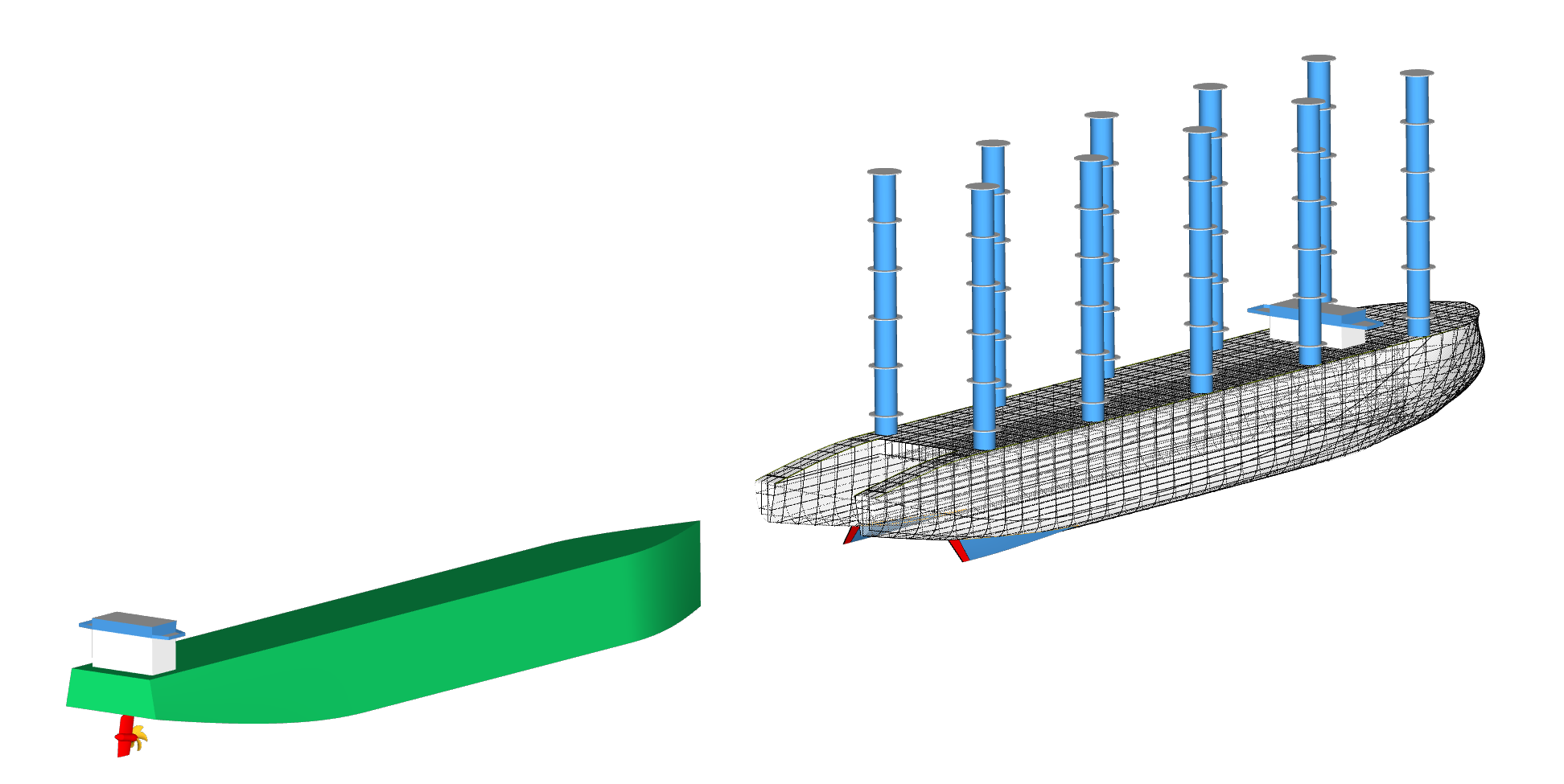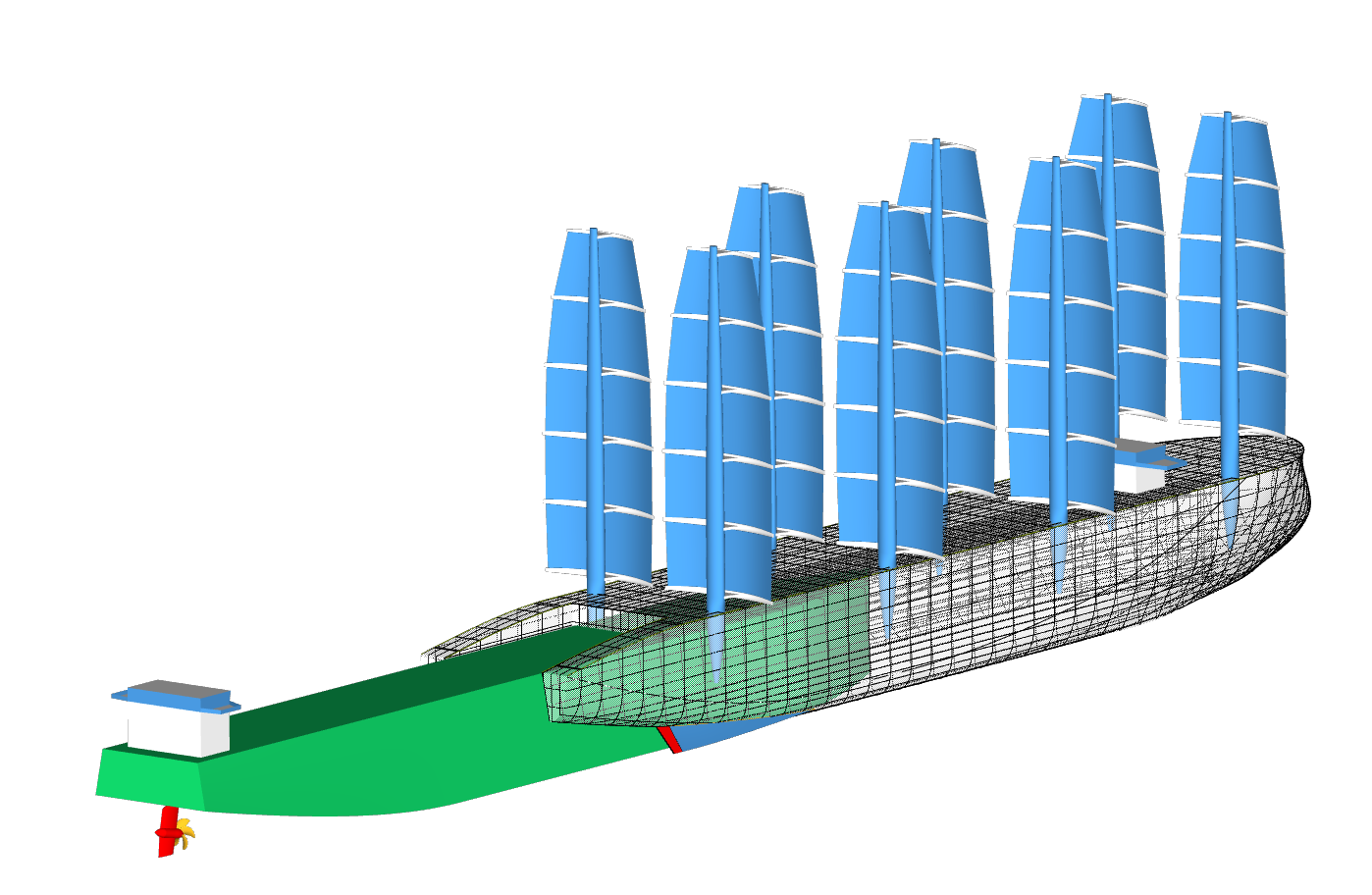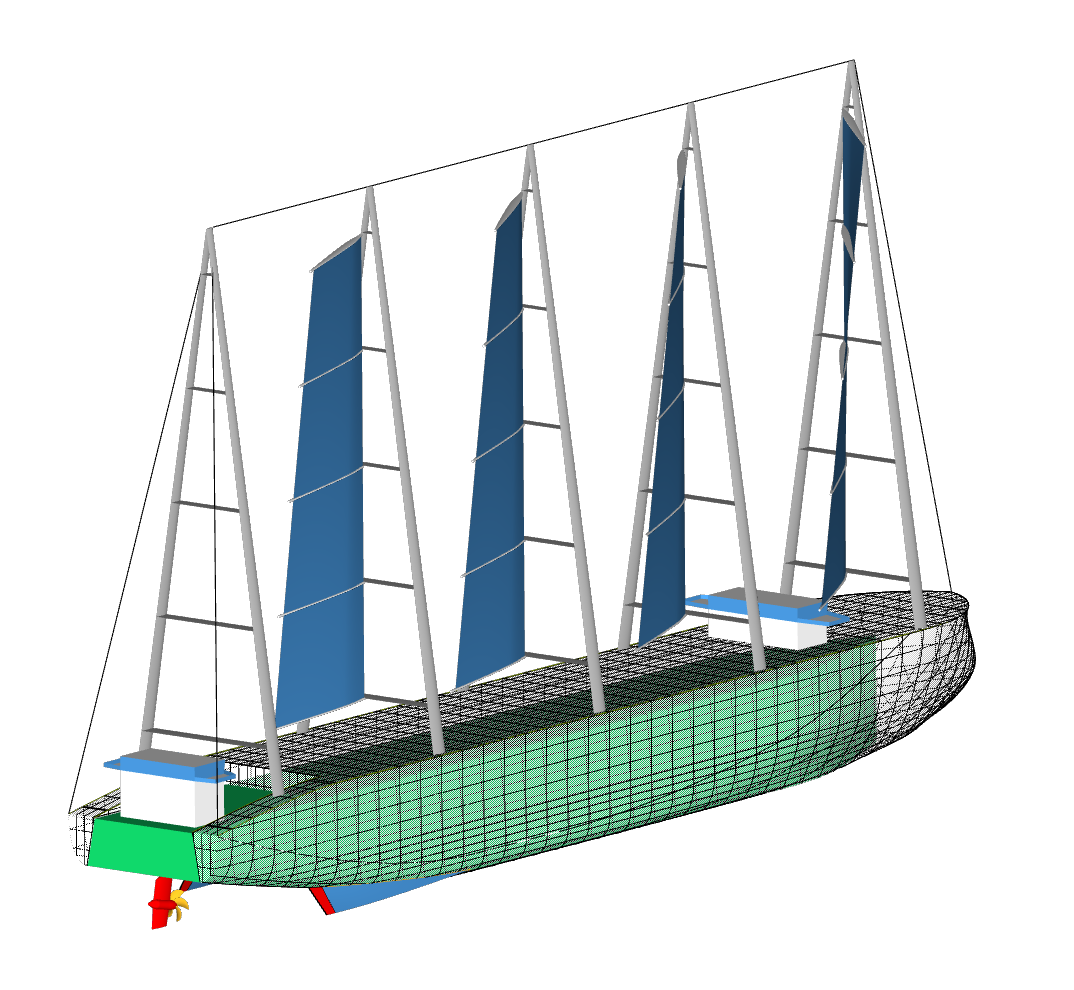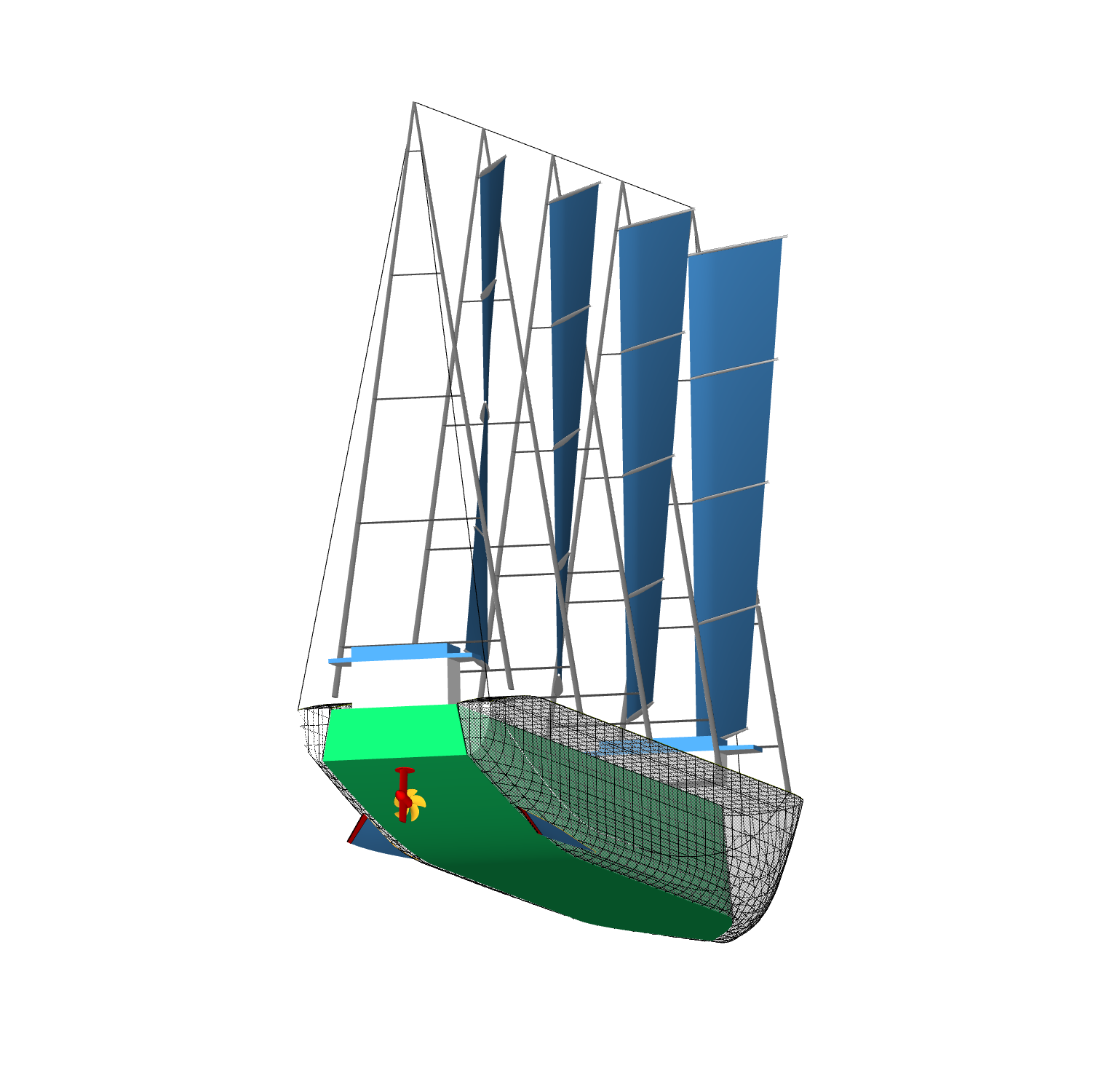The essential advance of Cargo-Sail-Concept is to focus on the separation of the sail-carrying part of the vessel from the cargo-holding part for interaction with port infrastructure.



The sail-carrying part of the vessel, which is not used in the harbours, stays safely away from the quayside, where it would interfere with bridges and cargo loading facilities. The cargo holding part of the vessel will move on to the quayside, where it can be handled in a conventional manner like every other engine driven vessel.
Both parts combined result in a smooth hull with minimal wetted surface.
The dominant resistance part for large vessels, sailing at moderate speeds, is frictional resistance from the ships hull. Minimizing the wetted area of the concept-design will improve wind-propulsion-efficiency.
Balancing the aero- and hydrodynamic forces
While sailing, using large wind-propulsion-systems, engine thrust can be minimized. Keel-systems are necessary in order to balance the resulting forces from these systems. If appropriate additional rudders, to maintain steering and course keeping abilities of the vessel, are utilized.
Safe and economic operation
Experience with existing vessels, equiped with wind-propulsion-systems, prooved that the use of wind-propulsion-systems significantly reduces ship motion, especially roll-motions, in heavy weather situations. This aspect leads to safe and economic operation of the wind powered cargo vessel.

Different approaches on how and to what extend the separation of the sail- carrying system from the cargo-holding system can be achieved, will be investigated and evaluated.
Neueste Kommentare